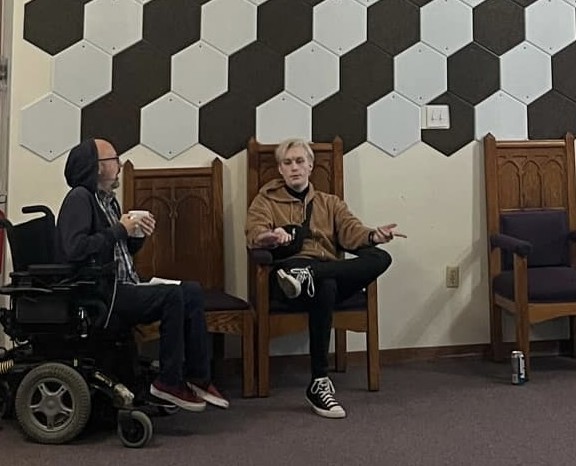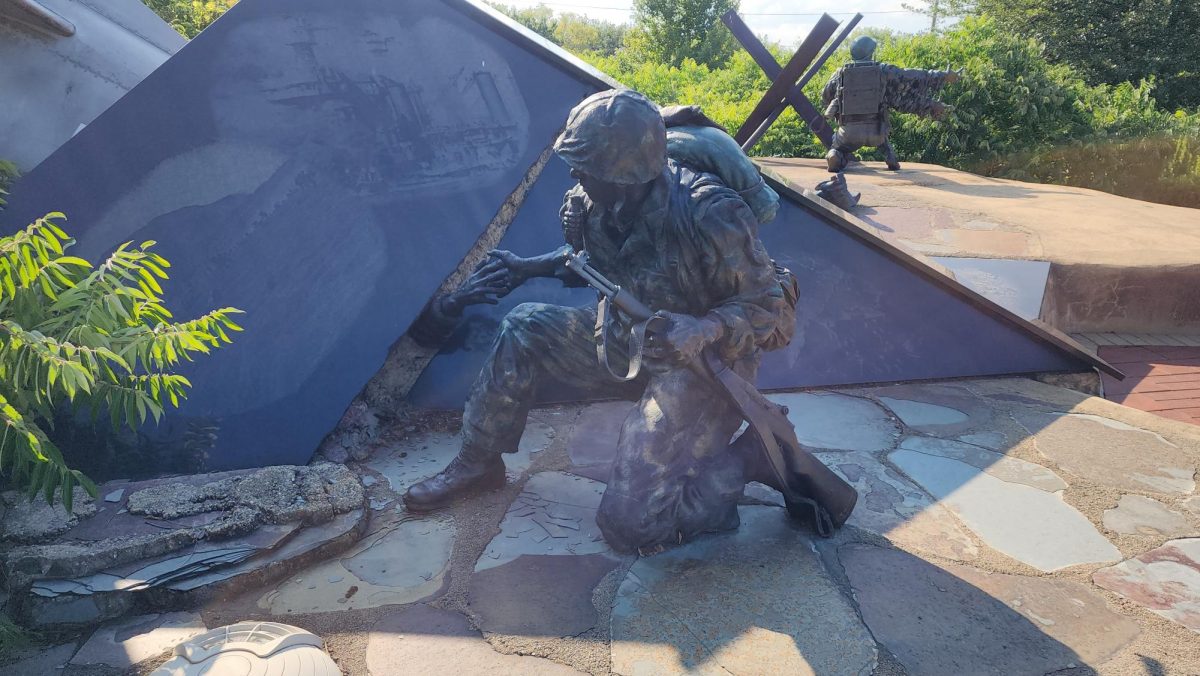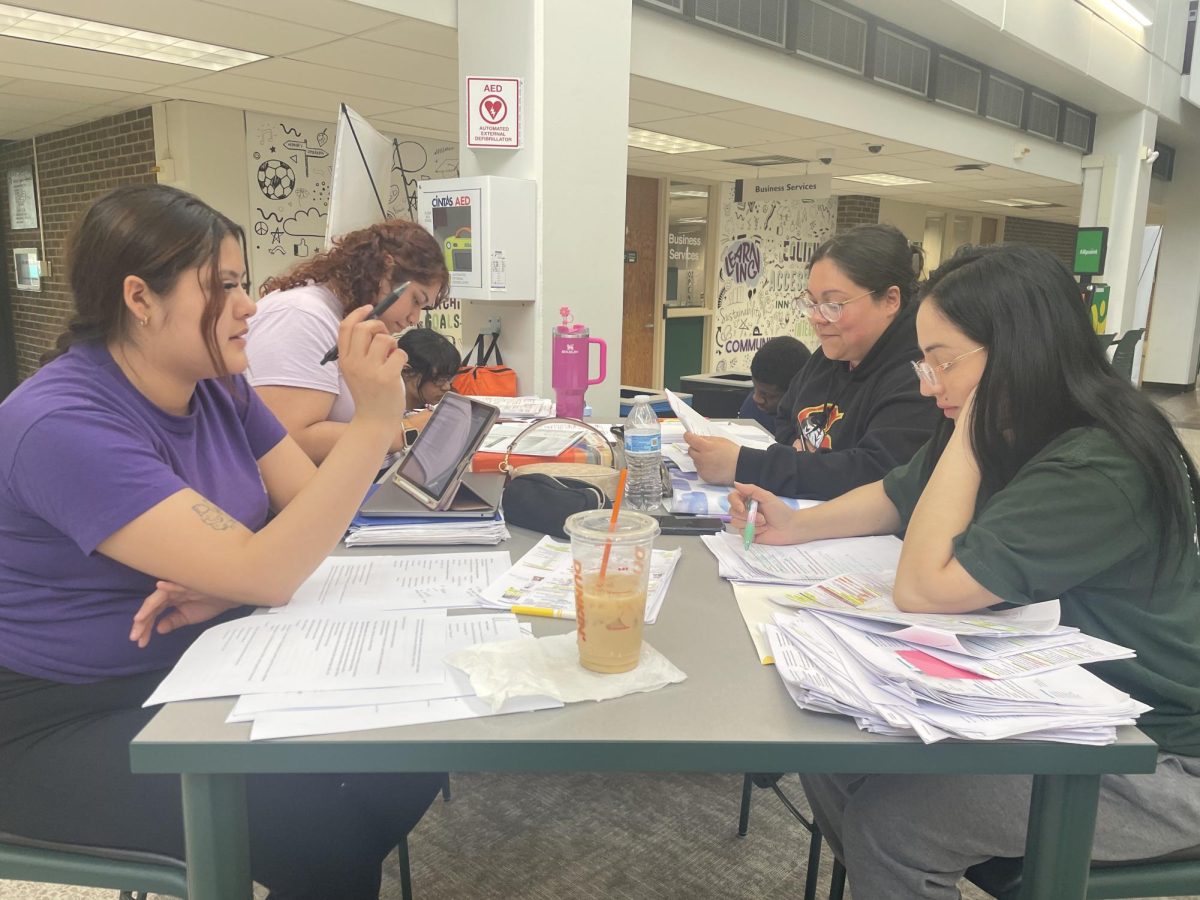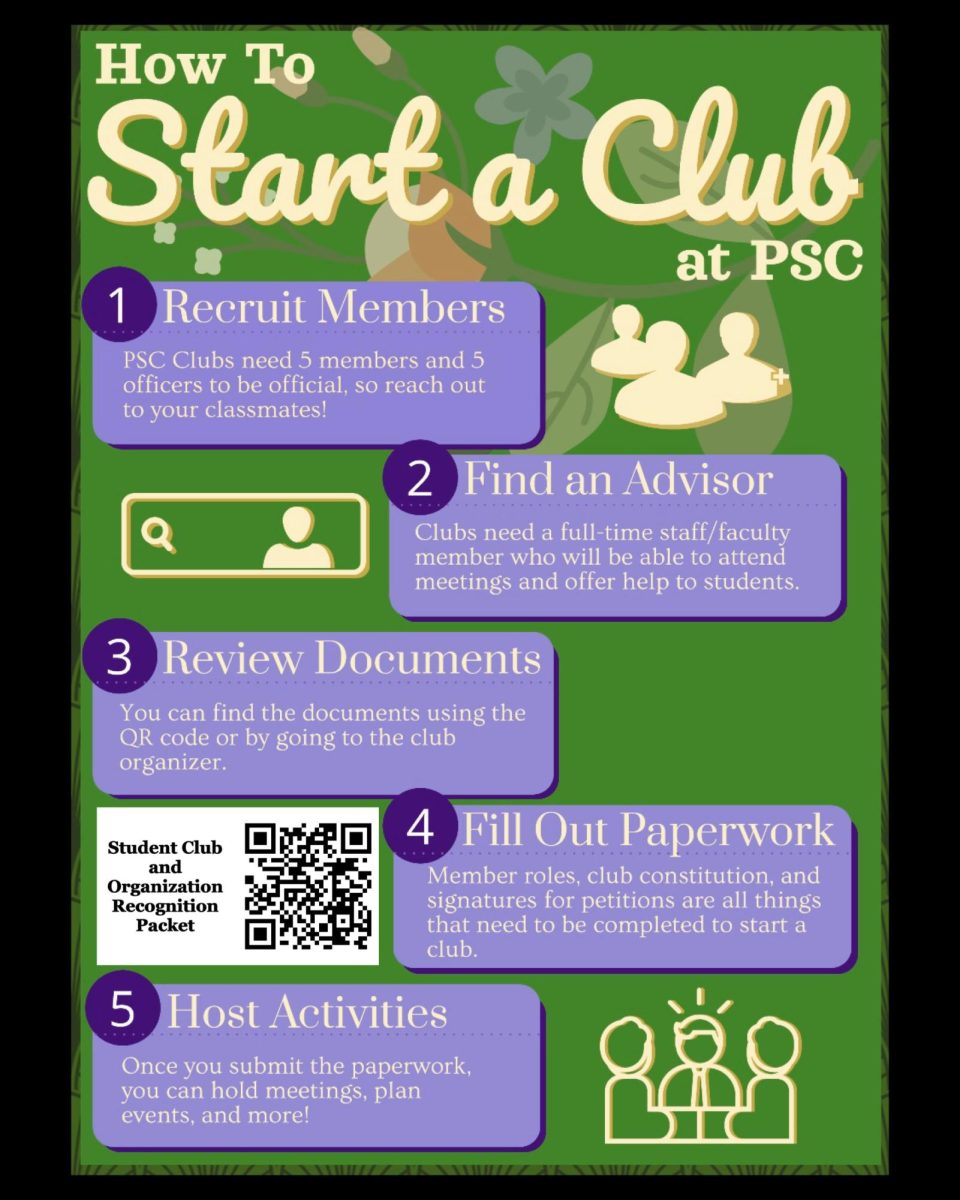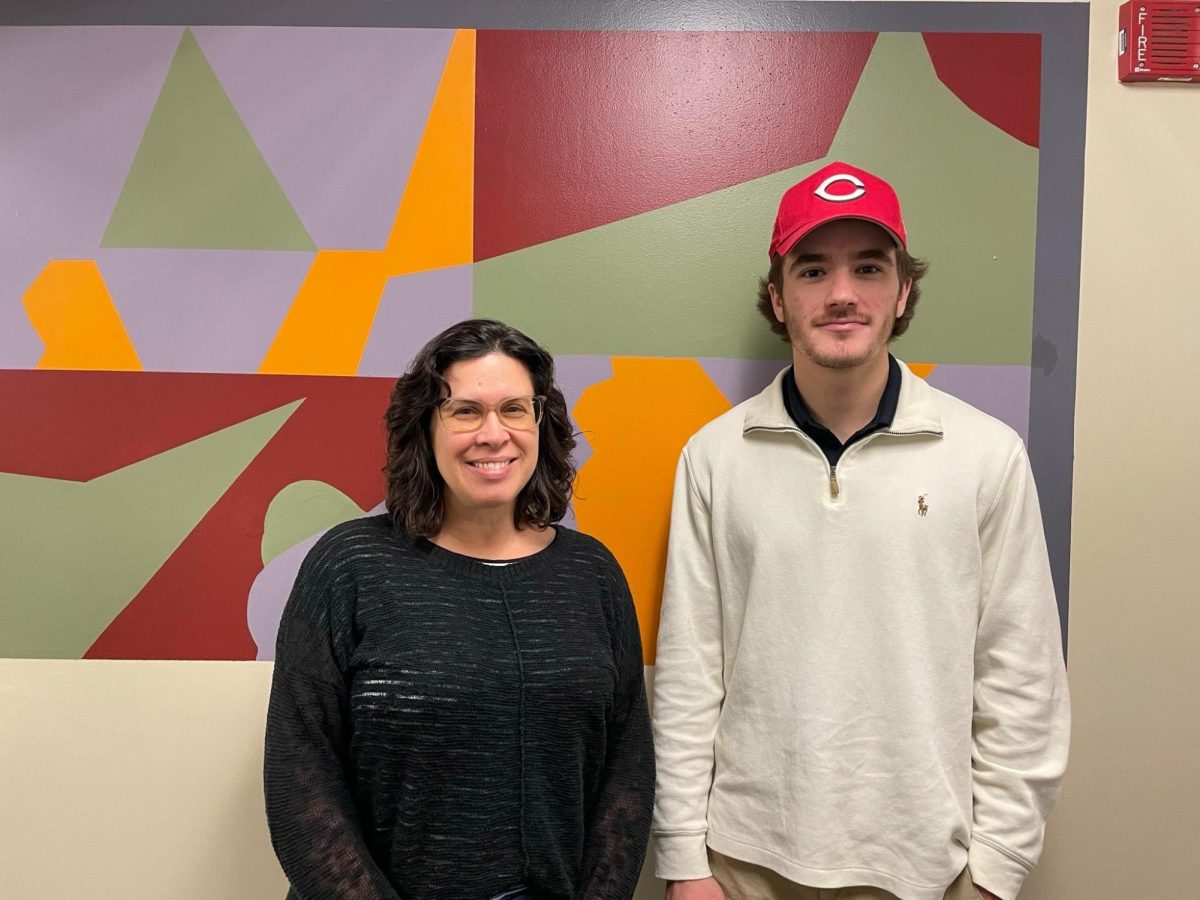What are the Benefits of Clubs for Students?
Clubs at PSC have always played an influential role in putting the “community” in our community college. While clubs serve as the perfect environment for like-minded students to share ideas, passions, and interests, they also provide students with resources and opportunities to build the relationships, resumés, and necessary skillsets needed to advance in their intended career path.
What are some Current Clubs and what work have they recently done?
Prairie State College is home to many important social, academic, and cultural clubs. A few of these clubs include: BSU (Black Student Union), SGA (Student Government Association), LGBTQ+ Club, All Latin Alliance club, STEM Club, and Graphic design club, (just to name a few).
These clubs frequently hold activities that promote student involvement, and better the community within and beyond the walls of Prairie State College. Recently, in an attempt to improve student hunger, the SGA developed the PSC snack boxes which allow students to take snacks and other food items as needed, and leave snacks and other items for other students. This past Wednesday (Sept. 18, 2024), Celeste Garcia (she/her/ers/ella), who is the coordinator of the Latinx outreach and retention, and faculty advisor of the ALA (All Latin Alliance club) hosted a “Bienvenida” event where Latinx PSC alumni shared their experiences with transferring to a 4-year university, provided tips on how to apply for scholarships, and on how to perform well in college classes.
Along with providing resources for students, clubs at Prairie State College have also been known to fight social injustices. For example, just this past May, PSC’s LGBTQ+ Club petitioned the Board to discontinue their graduation partnership with a local church that supported anti-LGBTQ beliefs. The decision was supported, and PSC discontinued their partnership with the church and hosted a “Lavender Graduation” to celebrate LGBTQ+ graduates.
These examples are just a small number of the recent activities that PSC Clubs have been involved in. So now that you know some of the things that clubs are responsible for around the PSC community, why not learn how to start one?
Creating a Club at PSC
How has the Process for Creating a Club changed as of Fall 2024?
Before you start a club at PSC, it is important to note the requirements and necessary steps that must be made to begin the process. As of Fall 2024, a few significant changes have been made to the requirements for starting up a club at PSC:
- The Organization Petition page which originally asks for 30 signatures, now only requires 10.
- Clubs only need a minimum of two officer positions filled (President & Treasurer)
These new requirements should help the process be easier for students who previously experienced difficulties in starting a club at PSC.
Step 1: Understand the Responsibilities
Starting a club can be challenging, but it will allow you to bring community to a population of students who share similar interests, passions, or mindsets. Finding the purpose for your club, whether it is academic related, socially related, or to help the community, is vital.
It is important to know the responsibilities that come with starting a club and how you can utilize the club’s resources to their fullest extent. Upon starting a club, club officers will be assigned/elected and the school will provide a budget for funding events and member engagement. It is important to also note that your club will have to have set meeting times, which can prove to be a tricky task since meetings may coincide with the meeting times of other clubs.
Although club officers have many responsibilities and duties, it is a worthwhile experience for members of your future club to consider becoming a club officer. As an officer for the club, (depending on the position) they will assume more leadership roles and will become a vital part in ensuring that the club remains active.
Step 2: Form an Idea
Starting a club begins with an idea, which can be formed between multiple students. Also, it might be a good idea to check if the club you might want to pursue already exists, to avoid starting a club when that club is already active.
Step 3: Obtain the Resources
The Student Government Association (SGA), provides resources for a variety of different things at PSC. They are there to help students and provide a better student experience. The Student Government Association will assist in getting your club up and running. SGA might also recommend you talk to the SGA Advisor, who will help you get set up with the paperwork to officiate the club.
Additionally, the forms (Student Club and Organization Recognition Packet and How to Create a Club Constitution) can be found online using this link.
Step 4: Recruit Members
Recruiting can be a daunting task, especially when the club is first starting up. A good way to begin recruiting members for your club is to start with your immediate circle of friends, classmates, and professors, and spread the word about your club. Finding like-minded individuals who share your passion for starting the club is important. Build your community!
If for some reason you are still struggling with recruitment, the next step would be to email Helen Manley, the advisor of SGA, to get her expert advice on how to advertise your club.
Member recruitment is crucial to starting a club. At least two members are needed to be club officers along with additional general members. Officers also must have regular attendance at club meetings/events.
Step 5: Look over the Paperwork
The SGA provides instructions on how to officiate a club and can give you a packet with all the details.
Some of the things you will need to complete are:
- A petition signed by at least 10 currently enrolled PSC Students
- Membership roster (officers) of at least 2 PSC Students
- Include names and contact information for officers
- The club’s constitution includes the following:
- Purpose/mission statement
- Officer positions and duties
- Membership Responsibilities
- Election process
All of these can be submitted at the same time but the membership requirements should be a higher priority, since you need at least two officers and 10 signatures first before the club begins.
Step 6: Find an Advisor
All clubs need to have an advisor. An advisor is someone who is a full-time faculty member. A good rule of thumb is to select a faculty member who is involved or familiar with the context of your club. For example, the music club has faculty member Valerie Nicholson as their advisor. Professor Nicholson is one of the music professors.
Advisors serve as a guide for the club, and will have to attend most meetings and activities. So if you find someone, make sure to ask them what times work for them to hold meetings.
Finding an advisor might be difficult, but reach out to your favorite professors or someone in the field of your club and express your desire to start a club.
Step 7: Submit the Paperwork
Take your completed material to Helen Manley, the SGA advisor, who will process it and let the Student Government Association discuss your proposed club idea at their next meeting.
Step 8: Hold Meetings and Plan Activities
Once your club has been established, you can start to hold meetings and plan activities. Holding meetings weekly or bi-weekly can be essential to keeping up with club members.
Planning events such as trips to museums, guest speakers, or even something on campus can be incredibly engaging for members of the club and new students debating on joining.
Reaching out to Helen Manley about your meeting schedule can be important to market your club through PSC announcement emails. Many clubs use the PSC announcement emails to reach a wider audience and provide them with details about what your club is about and what you will be doing in your meeting/event. The SGA can post your meeting dates in a calendar by the SGA office which can also be helpful to gaining more members who are interested.

